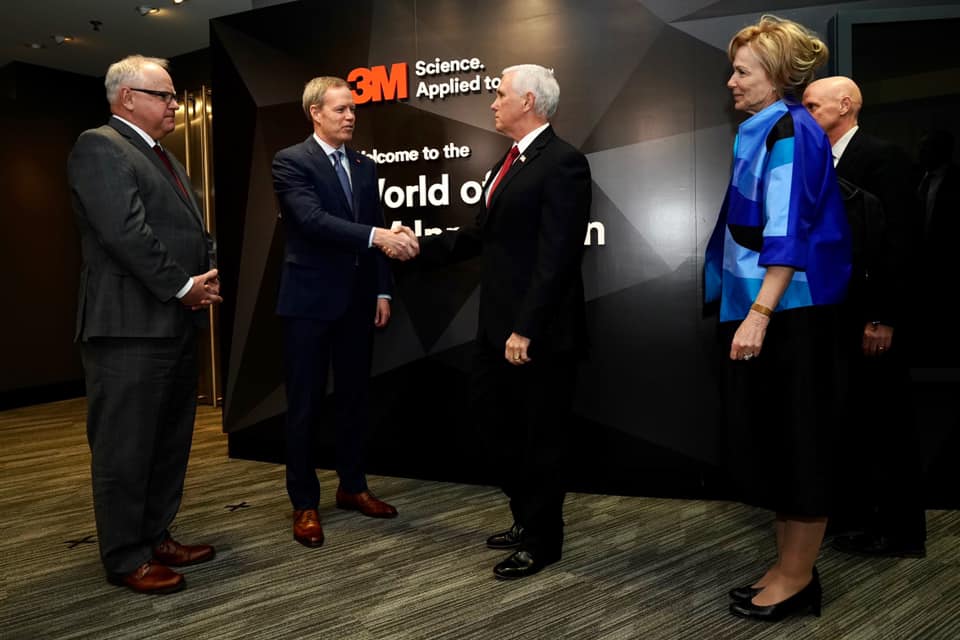Coronavirus
Lost Time: How coronavirus spread while supply orders lagged

The government’s stockpile of critically needed medical supplies and equipment is nearly drained just as the numbers of people infected with the coronavirus and in need of critical care is surging. Back in January, the first alarms were sounding about the outbreak in China. In time, it would become a global pandemic. An Associated Press review has found that the Trump administration squandered precious months before bolstering the federal stockpile of urgently needed medical supplies and equipment.
A timeline of events in the administration’s response to the outbreak:
DEC. 31 — Chinese health officials alert the world of a cluster of 27 pneumonia cases of unknown cause, in the first report from Wuhan.
JAN. 9 —The World Health Organization issues first public advisory about preliminary determination of novel coronavirus.
JAN. 10 — Former White House homeland security adviser Tom Bossert, who was ousted by President Donald Trump in 2018, warns in a tweet: “We face a global health threat. … Coordinate!”
JAN. 18 — Health and Human Services Secretary Alex Azar makes the first call to Trump about the virus.
JAN. 20 — First patient with COVID-19, the disease caused by the virus, is confirmed in the U.S.
JAN. 22 — In televised interview, Trump says: “We have it totally under control. … It’s one person coming in from China. We have it under control. It’s going to be just fine.”
JAN. 28 — 3M CEO Mike Roman says the company will ramp up to “24/7” production of N95 respirator masks in response to the threat.
JAN. 31 — U.S. declares a public health emergency, suspends entry of foreign nationals who have been in China in the past 14 days. US residents and their family members are still allowed to enter.
FEB. 7 — Secretary of State Mike Pompeo announces that the government had airlifted nearly 18 tons of donated respirator masks, surgical masks, gowns and other medical supplies to China.
FEB. 15 — Trump, vacationing in Florida, plays golf at his Trump International club in West Palm Beach.
FEB. 23 — The Centers for Disease Control and Prevention reports community spread of virus in California, Oregon and Washington state.
FEB. 24 — White House sends Congress $2.5 billion emergency request for coronavirus outbreak. Trump tweets: “The Coronavirus is very much under control in the USA. … Stock Market starting to look very good to me!”
FEB. 25 — The CDC warns that it expects COVID-19 to spread in the U.S. at the community level, and that the disruptions to daily life could be “severe.” The CDC also recommended that parents should discuss the possibility of school closures and that businesses should consider telecommuting options.
FEB. 26 — Trump appoints Vice President Mike Pence to lead the U.S. government Coronavirus Task Force. Trump says: “Because of all we’ve done, the risk to the American people remains very low. … When you have 15 people, and the 15 within a couple of days is going to be down to close to zero.”
FEB. 27 — Trump, at a White House reception, says: “It’s going to disappear. One day, it’s like a miracle, it will disappear.”
FEB. 29 — At the Conservative Political Action Conference in Maryland, Trump promotes his administration’s response to the virus, saying his decision to impose travel restrictions “has been now given very good grades, like an A +++.”
MARCH 3 — Dr. Robert Kadlec, the assistant secretary for preparedness and response at HHS, testified before Congress last month that the country would need roughly 3.5 billion N-95 respirators to get through the pandemic, but the national supply chain then had just about 1% of that amount.
MARCH 4 — HHS announces its intent to purchase 500 million N95 respirators for distribution through the national stockpile over the following 18 months.
MARCH 5 — Congress passes $8.3 billion emergency bill for coronavirus — more than three times the amount originally requested by White House.
MARCH 6 — Trump visits the CDC lab in Atlanta admit widespread reports that patients exhibiting COVID-19 symptoms can’t get tested. Trump falsely asserts: “Anyone who wants a test can get a test.” He then departs for weekend at his Mar-a-Lago Club in Florida.
MARCH 7-8 — Trump plays golf twice in two days at the Trump International Club.
MARCH 9 — Trump tweets: “The Fake News Media and their partner, the Democrat Party, is doing everything within its semi-considerable power (it used to be greater!) to inflame the CoronaVirus situation, far beyond what the facts would warrant. Surgeon General, ‘The risk is low to the average American.’”
MARCH 11 — WHO officially declares COVID-19 outbreak to be a global pandemic. There are then 118,000 cases in 114 countries, with 4,291 deaths. In the U.S., the CDC reports 938 confirmed cases spread across 38 states, with 29 deaths.
MARCH 12 — Federal contracting records show HHS makes its first big purchase of N95 respirator masks since the start of the pandemic, a $4.8 million order with 3M, the largest U.S.-based manufacturer. The masks are due for delivery by April 30. Trump says of the virus: “It’s going to go away.”
MARCH 13 — Trump declares a national emergency.
MARCH 21 — HHS places another $173 million order with 3M for N95 respirator masks. The contract runs through October 2021.
MARCH 22 — In statement, 3M CEO says company has doubled its global output of N95 masks to nearly 100 million per month. Royal Philips, a Dutch company with plants in the U.S., says it is ramping up the production of hospital ventilators and plans to double production within eight weeks. The company is then making 1,000 ventilators per week in the U.S.
March 24 — Gov. Andrew Cuomo, D-N.Y., estimates New York would need a “minimum” of 30,000 additional ventilators to meet the peak of the outbreak, predicted to arrive by the middle of April.
MARCH 27 — Trump announces he was using his power under Defense Production Act for the first time to order General Motors to begin manufacturing ventilators — work the company had already announced was underway. Trump pledges that the federal government will ensure that 100,000 new ventilators are made available “within the next 100 days.”
APRIL 2 — Trump threatens in a Tweet to “hit 3M hard” through a DPA order, saying the company “will have a big price to pay!” The president also says he will order several companies, including Philips, to increase production of ventilators.







